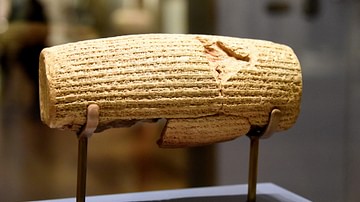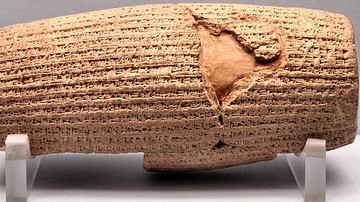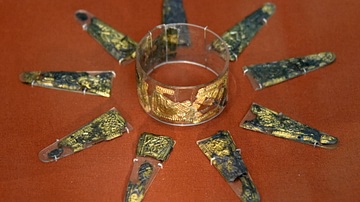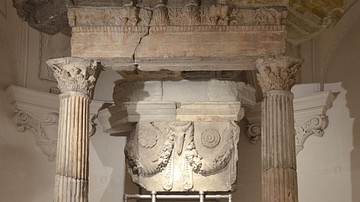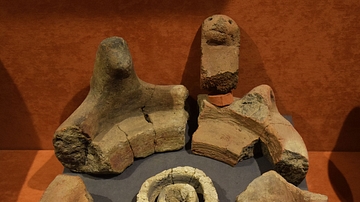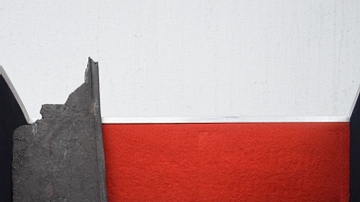Illustration
These 2 small fragments once belonged to a large clay tablet inscribed with a duplicate of the Cyrus Cylinder text. They were identified among The British Museum extensive collections of clay tablets in December 2009 and January 2010. The cylinder had previously always been considered unique but this discovery proves that the same royal inscription was copied on public documents for widespread distribution. Despite their small size, both fragments contribute important new information. We can now read that Cyrus' policies and building plans had the blessing of the great Babylonian god Marduk and that his dynasty would endure.
The left fragment duplicates lines 34-37 of the Cyrus Cylinder while the right fragment duplicates lines 1-2; 42-45 of the Cyrus Cylinder. Moreover, the right hand fragment adds new words to the beginning and end of the text, and even records the name of the Babylonian scribe who wrote out the tablet; Qishti-Marduk.
Both were excavated by Hormuzd Rassam and acquired by the British Museum in the year 1881 CE. From southern Iraq. Late Babylonian Period, 6th century BCE. (The British Museum, London)
About the Author
Cite This Work
APA Style
Amin, O. S. M. (2016, April 11). Additional Fragments of the Cyrus Cylinder Text. World History Encyclopedia. Retrieved from https://www.worldhistory.org/image/4823/additional-fragments-of-the-cyrus-cylinder-text/
Chicago Style
Amin, Osama Shukir Muhammed. "Additional Fragments of the Cyrus Cylinder Text." World History Encyclopedia. Last modified April 11, 2016. https://www.worldhistory.org/image/4823/additional-fragments-of-the-cyrus-cylinder-text/.
MLA Style
Amin, Osama Shukir Muhammed. "Additional Fragments of the Cyrus Cylinder Text." World History Encyclopedia. World History Encyclopedia, 11 Apr 2016, https://www.worldhistory.org/image/4823/additional-fragments-of-the-cyrus-cylinder-text/. Web. 17 Apr 2025.



